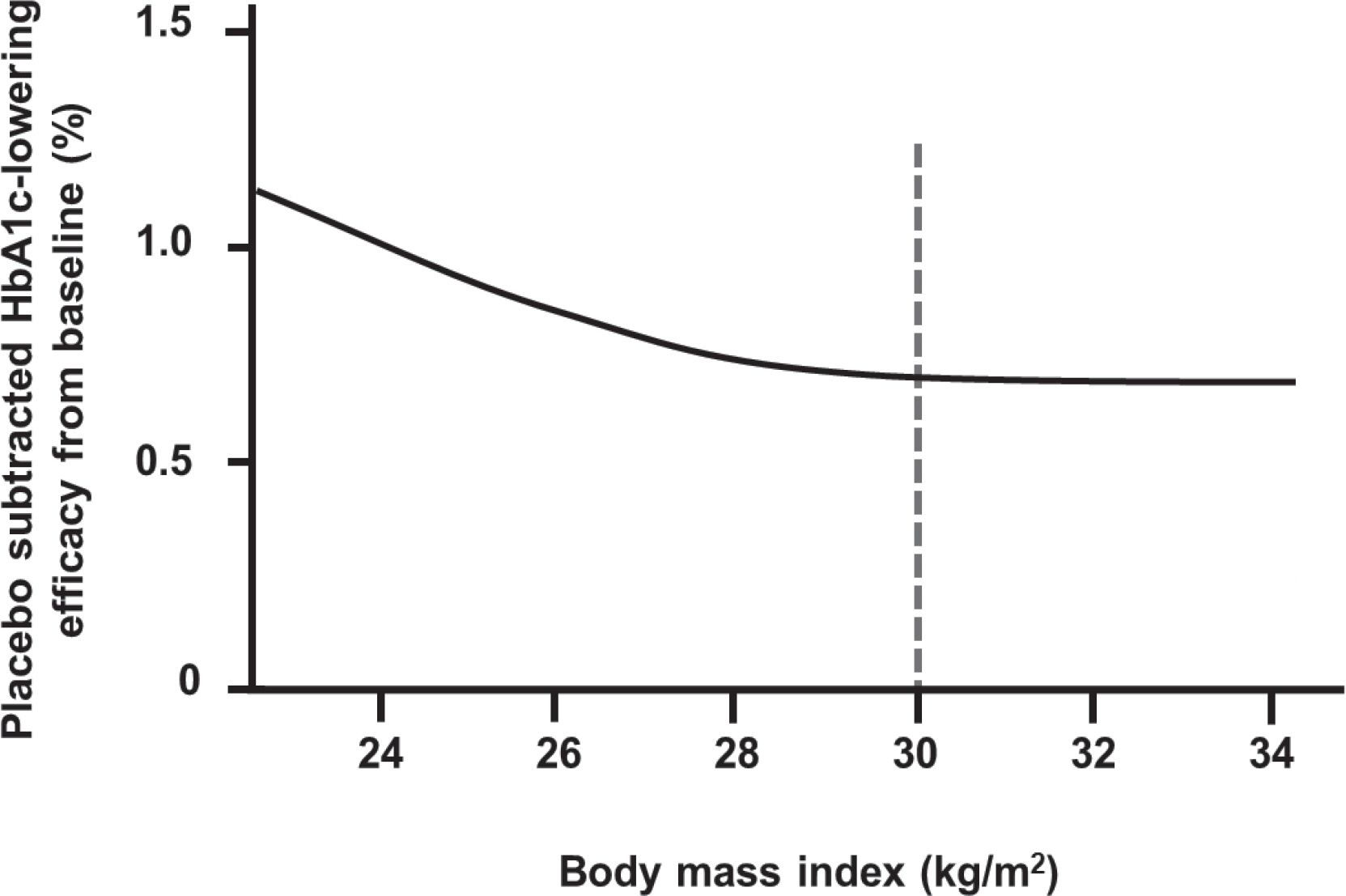J Korean Diabetes.
2013 Sep;14(3):133-137. 10.4093/jkd.2013.14.3.133.
Comparison of the Efficacy of Dipeptidylpeptidase-4 Inhibitors Between Asian and Non-Asian Populations
- Affiliations
-
- 1Department of Internal Medicine, Seoul National University College of Medicine, Seoul, Korea. ymchomd@snu.ac.kr
- KMID: 2173922
- DOI: http://doi.org/10.4093/jkd.2013.14.3.133
Abstract
- Type 2 diabetes is different between Asian and non-Asian populations. Compared with their Caucasian counterparts, Asian patients with type 2 diabetes have the characteristics of lower body mass index, lower insulin secretory response, and a lower degree of insulin resistance. Furthermore, a recent study revealed that the incretin effect is not decreased in Korean patients with type 2 diabetes compared with normal glucose tolerance. The HbA1c lowering efficacy of dipeptidylpeptidase-4 inhibitors, which enhances active incretin hormones, is greater in Asian people than in non-Asian people, which could be ascribed to their lower body mass indexes. Therefore, doctors should take these differing characteristics of type 2 diabetes in Asian patients into account for customized anti-diabetes therapy.
Keyword
MeSH Terms
Figure
Reference
-
References
1. Drucker DJ, Nauck MA. The incretin system: glucagon-like peptide-1 receptor agonists and dipeptidyl peptidase-4 inhibitors in type 2 diabetes. Lancet. 2006; 368:1696–705.
Article2. Cho YM, Merchant CE, Kieffer TJ. Targeting the glucagon receptor family for diabetes and obesity therapy. Pharmacol Ther. 2012; 135:247–78.
Article3. Cho YM, Kieffer TJ. K-cells and glucose-dependent insulinotropic polypeptide in health and disease. Vitam Horm. 2010; 84:111–50.
Article4. Nauck MA, Homberger E, Siegel EG, Allen RC, Eaton RP, Ebert R, Creutzfeldt W. Incretin effects of increasing glucose loads in man calculated from venous insulin and C-peptide responses. J Clin Endocrinol Metab. 1986; 63:492–8.
Article5. Bagger JI, Knop FK, Lund A, Vestergaard H, Holst JJ, Vilsboll T. Impaired regulation of the incretin effect in patients with type 2 diabetes. The Journal of clinical endocrinology and metabolism. 2011; 96:737–45.
Article6. Knop FK, Vilsboll T, Hojberg PV, Larsen S, Madsbad S, Volund A, et al. Reduced incretin effect in type 2 diabetes: cause or consequence of the diabetic state? Diabetes. 2007; 56:1951–9.7. Nauck MA, Heimesaat MM, Orskov C, Holst JJ, Ebert R, Creutzfeldt W. Preserved incretin activity of glucagon-like peptide 1 [7–36 amide] but not of synthetic human gastric inhibitory polypeptide in patients with type-2 diabetes mellitus. J Clin Invest. 1993; 91:301–7.
Article8. Kieffer TJ, McIntosh CH, Pederson RA. Degradation of glucose-dependent insulinotropic polypeptide and truncated glucagon-like peptide 1 in vitro and in vivo by dipeptidyl peptidase IV. Endocrinology. 1995; 136:3585–96.
Article9. Kim YG, Hahn S, Oh TJ, Kwak SH, Park KS, Cho YM. Differences in the glucose-lowering efficacy of dipeptidyl peptidase-4 inhibitors between Asians and non-Asians: a systematic review and metaanalysis. Diabetologia. 2013; 56:696–708.
Article10. American Diabetes Association. Diagnosis and classification of diabetes mellitus. Diabetes Care. 2012; 35(Suppl 1):S64–71.11. Fukushima M, Suzuki H, Seino Y. Insulin secretion capacity in the development from normal glucose tolerance to type 2 diabetes. Diabetes Res Clin Pract. 2004; 66(Suppl 1):S37–43.
Article12. Kim YI, Choi CS, Kim SW, Kim HK, Kim CH, Park JY, Hong SK, Lee KU. Changes in serum true insulin and C-peptide levels during oral glucose tolerance test in Koreans with glucose intolerance. J Korean Diabetes Assoc. 1998; 22:192–8.13. STripathy D, Carlsson M, Almgren P, Isomaa B, Taskinen MR, Tuomi T, Groop LC. Insulin secretion and insulin sensitivity in relation to glucose tolerance: lessons from the Botnia Study. Diabetes. 2000; 49:975–80.14. Yoon KH, Lee JH, Kim JW, Cho JH, Choi YH, Ko SH, Zimmet P, Son HY. Epidemic obesity and type 2 diabetes in Asia. Lancet. 2006; 368:1681–8.
Article15. Lear SA, Humphries KH, Kohli S, Chockalingam A, Frohlich JJ, Birmingham CL. Visceral adipose tissue accumulation differs according to ethnic background: results of the Multicultural Community Health Assessment Trial (M-CHAT). Am J Clin Nutr. 2007; 86:353–9.
Article16. Park YW, Allison DB, Heymsfield SB, Gallagher D. Larger amounts of visceral adipose tissue in Asian Americans. Obes Res. 2001; 9:381–7.
Article17. Chiu KC, Cohan P, Lee NP, Chuang LM. Insulin sensitivity differs among ethnic groups with a compensatory response in beta-cell function. Diabetes Care. 2000; 23:1353–8.
Article18. Oh TJ, Kim MY, Shin JY, Lee JC, Kim S, Park KS, Cho YM. The incretin effect in Korean subjects with normal glucose tolerance or type 2 diabetes. Clin Endocrinol (Oxf). 2013 Feb 13. [Epub].http://dx.doi.org/10.1111/cen.12167.
Article19. Kodama K, Tojjar D, Yamada S, Toda K, Patel CJ, Butte AJ. Ethnic differences in the relationship between insulin sensitivity and insulin response: a systematic review and metaanalysis. Diabetes Care. 2013; 36:1789–96.
Article20. Rosenstock J, Baron MA, Dejager S, Mills D, Schweizer A. Comparison of vildagliptin and rosiglitazone monotherapy in patients with type 2 diabetes: a 24-week, double-blind, randomized trial. Diabetes Care. 2007; 30:217–23.21. VHu P, Yin Q, Deckert F, Jiang J, Liu D, Kjems L, Dole WP, He YL. Pharmacokinetics and pharmacodynamics of vildagliptin in healthy Chinese volunteers. J Clin Pharmacol. 2009; 49:39–49.22. Aso Y, Ozeki N, Terasawa T, Naruse R, Hara K, Suetsugu M, Takebayashi K, Shibazaki M, Haruki K, Morita K, Inukai T. Serum level of soluble CD26/dipeptidyl peptidase-4 (DPP-4) predicts the response to sitagliptin, a DPP-4 inhibitor, in patients with type 2 diabetes controlled inadequately by metformin and/or sulfonylurea. Transl Res. 2012; 159:25–31.
Article
- Full Text Links
- Actions
-
Cited
- CITED
-
- Close
- Share
- Similar articles
-
- Neoadjuvant Chemotherapy in Asian Patients With Locally Advanced Gastric Cancer
- DPP-4 Inhibitors as a New Option for the Management of Type 2 Diabetes
- Genetic and Environmental Factors Contributing to Visceral Adiposity in Asian Populations
- The Duffy Blood Group Genotypes in Asian Populations
- Letter to the Editor: Comparison of efficacy between transforaminal epidural steroid injection technique without contrast versus with contrast in lumbar radiculopathy: a prospective longitudinal cohort study


